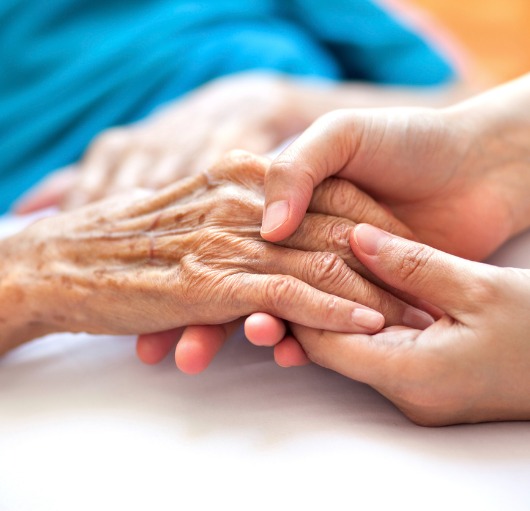Amy Tullin is Chief Physician Associate for Epsom and St Helier University Hospitals (ESTH) working clinically in emergency medicine. As one of the first physician associates at ESTH, Amy has become an ambassador for the role by sharing how much physician associates contribute to patient care.
Amy has been using BMJ Best Practice for years after she saw a colleague referring to the app while treating a patient. We recently caught up with Amy to find out about her role in the challenging emergency department environment and how BMJ Best Practice helps her to improve patient care.
What is your role?
“I teach and induct new physician associates into the Trust, which is very rewarding, but the best part of my role is seeing patients in the emergency department. We’re often the first people to see a patient when they walk in. They come to us with a problem, I take their history, examine them, work out what’s wrong and then come up with a management plan to make them feel better.
Working in emergency medicine you get to see the immediate impact your care has on patients.”
What challenges do you face in your role?
“The sheer volume of patients coming through the doors is the biggest challenge we face. Ten years ago, when I first started my career the department was a lot smaller, but since then the department has grown substantially.
There is a huge variety in the patients we see now. It’s not just the acute emergency issues we are more used to dealing with, but we’re increasingly seeing patients who are living with a number of chronic issues. Treating these patient requires me to use primary care skills that I haven’t typically
used as much before in emergency medicine.”
Why do you use BMJ Best Practice?
“I’ve had the BMJ Best Practice app on my phone for years, ever since I saw a colleague refer to it while on the floor. I’ve been qualified for a long time now and in that time many guidelines have changed since I was at university, so refreshing and recapping knowledge on the latest evidence-based information is important. I like the ease and convenience of having BMJ Best Practice on my phone, especially when I’m faced with something I’m not familiar with.
I’m confident in dealing with appendicitis, sepsis and things like that but sometimes more unusual things come through the door I haven’t seen in a few years or is more of a chronic long-term problem. When presented with these cases, having access to BMJ Best Practice is incredibly valuable.”
"BMJ Best Practice makes you a safer practitioner."
Amy Tullin, Chief Physician Associate, UK
Do you have any examples you can share when BMJ Best Practice helped you?
“We are increasingly seeing patients living with a number of health issues, especially in elderly patients. Recently I had a patient who had a number of different issues. Using BMJ Best Practice helped me to take a step back and work through each of these issues. I was able to address her diabetes, her high blood pressure and her infection, and review how they connected and impacted on one another. I was also able to check I was following guidelines and feel satisfied the patient was getting the best and most appropriate care possible.”
Has BMJ Best Practice ever changed your decision-making or changed the type of care that you are able to provide?
“BMJ Best Practice makes you a safer practitioner. It’s good to recognise that you don’t always know 100% what the treatment should be, or that you perhaps can’t quite remember what the latest guideline is.
BMJ Best Practice helps me to recap and refresh my knowledge. The app provides a lot of background information, so if I wanted to consider the theory or pathophysiology associated with a disease or injury I can. Whereas our local guidelines (that are really good and specific to our hospital) do not include detailed background information. But, if you want to reflect upon a case, or want to use it for your portfolio, you do need more detail than what the local guidelines offer.”


“Recently I had a patient who had a number of different issues. Using BMJ Best Practice helped me to take a step back and work through each of these issues.”
Amy Tullin, Chief Physician Associate, UK
Who would you recommend BMJ Best Practice to?
“I’d happily recommend BMJ Best Practice to all healthcare professionals. From medical students to consultants there is value for them in using BMJ Best Practice when treating patients. But, I’d also recommend it to nursing staff, physiotherapists and occupational therapists involved in patient care who may want to understand more about a particular case or a condition.
To all healthcare professionals I’d encourage them to get the BMJ Best Practice app on their phone. When they are in-between patients, it’s there for them to quickly look something up if they need to, and the detail is also there if they want to use it for more in-depth reflection on their practice.”





